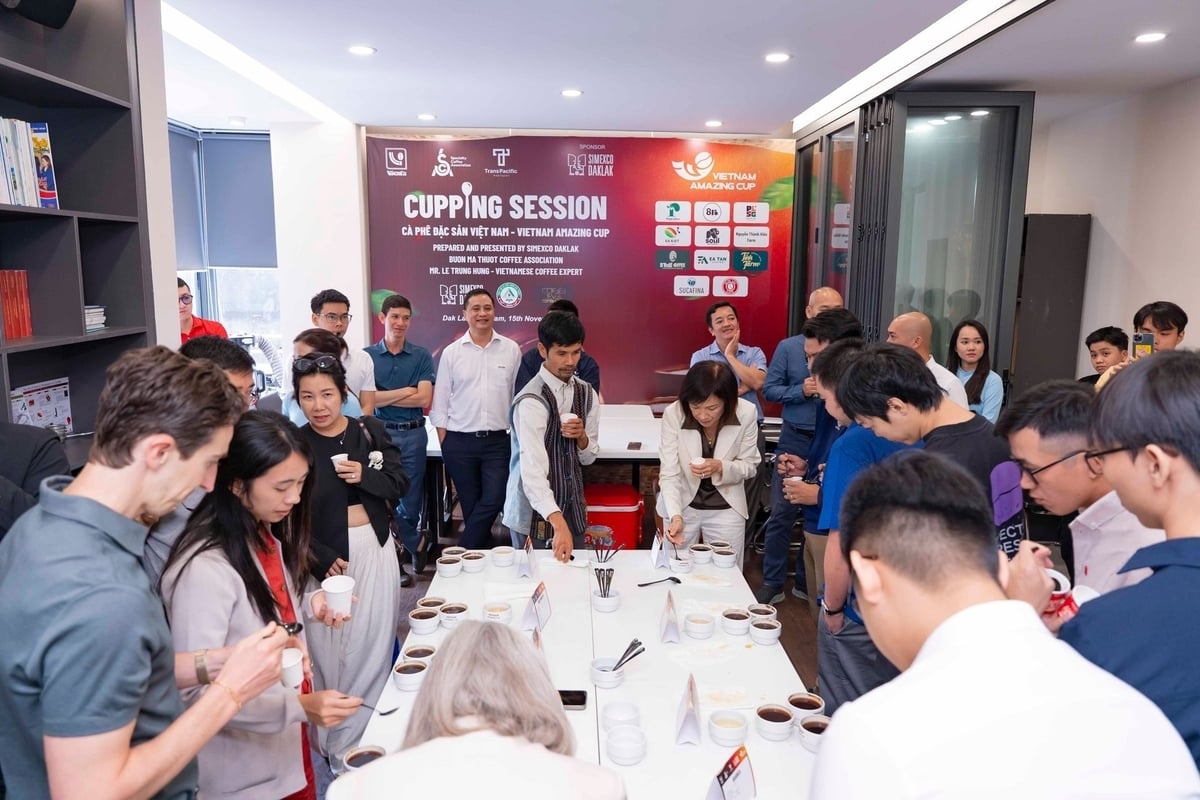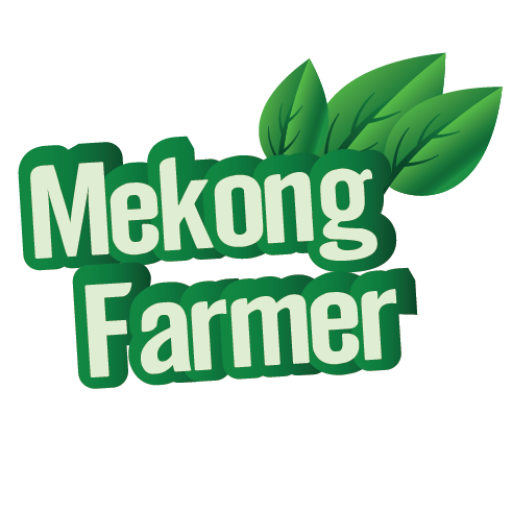(VAN) Viet Nam accounts for 43% of the world’s export volume of Robusta coffee. However, the Vietnamese Robusta coffee brand has yet to gain broad recognition on the global market.
On November 15, in Dak Lak province, the Viet Nam Coffee and Cocoa Association (VICOFA), in collaboration with the Trans-Pacific Partnership (TPP) Company, the Specialty Coffee Association (SCA), and Dakak September 2nd Import-Export Company Limited (Simexco Daklak), held a forum titled “Solutions for Promoting and Developing the Vietnamese Robusta Coffee Brand and Orientations for the Development of Vietnamese Specialty Coffee.”

Mr. Nguyen Nam Hai, Chairman of the Vietnam Coffee and Cocoa Association (VICOFA), speaks at the forum. Photo: Tran Tho.
Vietnamese Robusta coffee is still ‘nameless’
According to Mr. Nguyen Nam Hai, Chairman of the VICOFA, Viet Nam has a total coffee-growing area of about 730,000 hectares, of which 95% is planted with Robusta coffee, mainly in the five provinces of the former Central Highlands and several provinces in the Southeast region. The remaining 5% consists of Arabica (Catimor) grown in Lam Dong and several Northern mountainous provinces such as Son La, Dien Bien, and Quang Tri, along with a proportion of Liberica/Excelsa coffee.
Regarding exports, Mr. Nguyen Nam Hai noted that 85% of Viet Nam’s annual coffee output (about 1.5 million tons) is exported, accounting for around 18% of the world’s coffee exports and 43% of global Robusta coffee volume. Europe remains the largest market for Vietnamese coffee, accounting for nearly 50% of the country’s total coffee exports. Of this, the 27 EU member states account for roughly 40%, followed by Japan, the U.S., and several other countries.

Delegates enjoyed Viet Nam’s specialty coffee. Photo: Tran Tho.
According to Mr. Nguyen Nam Hai, over 91% of Viet Nam’s annual coffee export volume is green coffee beans, while nearly 9% is used for producing instant and roasted coffee. This is the main reason why Viet Nam ranks second in the world in terms of production and export volume. Viet Nam is the leading exporter of Robusta coffee, yet consumers in the U.S. and around the world are still largely unfamiliar with Vietnamese coffee. In addition, more than 81% of enterprises exporting instant and roasted coffee are FDI companies.
“Despite many advantages, the added value and brand image of Vietnamese Robusta coffee have not been commensurate with its existing potential,” Mr. Nguyen Nam Hai shared.
At the forum, Mr. Nguyen Thien Van, Vice Chairman of the Dak Lak Provincial People’s Committee, stated that hundreds of years ago, after surveying soil and climate conditions, the French selected Buon Ma Thuot as the place to introduce Robusta coffee, laying the foundation for the Buon Ma Thuot coffee brand, which is now a geographical indication recognized at the national brand level.
For many years, the Dak Lak provincial government has led the implementation of programs in high-quality coffee development, sustainable replanting, and supply chain value enhancement. Since 2008, the province has carried out numerous significant projects. Notably, Dak Lak’s coffee-growing areas have obtained the world’s first 4C–EUDR deforestation-free certification, and 35% of the province’s coffee-growing areas have now been digitized.
Developing the Vietnamese Robusta coffee brand
Mr. Thai Nhu Hiep, Vice Chairman of VICOFA, stated that Viet Nam is currently the world’s largest producer and exporter of Robusta coffee, with an annual output of over 30 million bags, equivalent to 1.8 million tons. However, to date, there is still no official “national brand” for Vietnamese Robusta, no dedicated cupping standards, and no unified promotional strategy, and its value has not yet been properly positioned on the global coffee map.

Scene of the forum. Photo: Tran Tho.
According to Mr. Thai Nhu Hiep, Viet Nam has ideal natural conditions, large-scale production, concentrated raw material areas, and a stable supply capacity. Vietnamese Robusta varieties are high-yielding, resilient to climate change, offer diverse flavors, and have strong potential for quality improvement. In recent years, the Fine Robusta movement following CQI (Coffee Quality Institute) standards has begun to develop in Viet Nam. An increasing number of Robusta coffee lots are achieving high scores, showcasing diverse flavors and innovative processing methods. However, their commercial value remains low and is not commensurate with the development potential.
Mr. Thai Nhu Hiep proposed that the TPP Company and the SCA support Vietnam in establishing cupping standards for commercial Vietnamese Robusta and granting corresponding international certifications. At the same time, assist in developing a national promotion strategy, including product positioning, brand identity, and origin story (Variety – Region – Process – Flavor); and coordinate to organize international trade promotion activities such as cupping tours, roadshows, and especially a thematic “Vietnamese Robusta” booth at the SCA Expo. “VICOFA and Vietnamese enterprises are committed to providing financial and resource support for these activities,” Mr. Hiep stated.

Delegates participating in the forum took a commemorative photo. Photo: Tran Tho.
On behalf of Dak Lak province, Mr. Nguyen Thien Van, Vice Chairman of the Provincial People’s Committee, expressed confidence that with the global knowledge connection from the SCA and the leadership of VICOFA, Viet Nam will become a destination for Robusta enthusiasts worldwide, and the Buon Ma Thuot coffee brand will become a national brand for Vietnamese specialty coffee. Dak Lak province also pledged to accompany stakeholders in developing the specialty coffee value chain, from varieties and cultivation to processing, roasting, and brewing.
At the forum, representatives from the Trans-Pacific Partner (TPP) Company, the Specialty Coffee Association (SCA), and various organizations and businesses proposed practical solutions to build, promote, and develop the Vietnamese Robusta coffee brand in the global market.
Agriculture News | Agri Products Price



